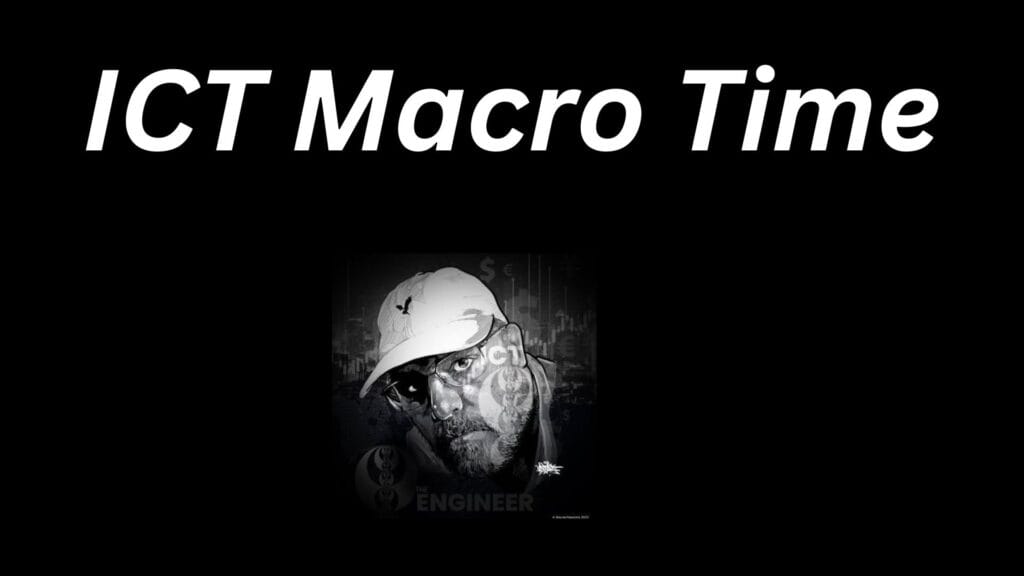Candle Range Theory (CRT) is a trading concept that analyzes market movements within the price ranges of candlesticks. It is beneficial for understanding price action across different timeframes and identifying optimal trade setups. To refine trading strategies, CRT combines technical analysis principles, such as liquidity, accumulation, manipulation, and distribution phases.
What is the ICT Candle Range Theory?
Inner Circle Trader Candle Range Theory ICT CRT is a trading methodology centered on analyzing candlestick ranges to interpret price dynamics in financial markets. It examines the interaction between the high, low, open, and close of a candlestick within the broader market context.
CRT integrates seamlessly with concepts like the ICT power of Three—Accumulation, Manipulation, and Distribution—and Smart Money Concepts (SMC), offering traders deeper insights into institutional market behavior and liquidity-driven price movements.

What are the Key Concepts of ICT CRT Theory?
Every candlestick represents a range defined by its high and low prices. The body of the candle (between open and close) reflects the primary price movement, while the wicks (shadows) show market dynamics beyond this range.
On higher timeframes, a single candlestick encapsulates broader price action. When zoomed into lower timeframes, the same candlestick reveals detailed phases like accumulation, manipulation, and distribution.
Candlestick as a Range:
- Every candlestick represents a range of price action.
- High and Low: Define the overall price movement.
- Body: Represents the distance between the opening and closing prices.
- Wicks (Shadows): Indicate volatility and liquidity grabs.

CRT ICT Trading Strategy
Trading CRT with ICT concepts you must have true under standing of market, how smart money manipulate price and forces that impact of price. Make a top-down analysis first and integrate with key time frames of trading.
To trade effectively using CRT:
- Identify a higher timeframe candlestick and mark its high and low as key levels.
- Switch to lower timeframes to observe price action within the range.
- Look for false breakouts, order blocks, or changes in market structure to confirm potential reversals or continuations.
- Enter trades near confirmed setups with stop-loss levels below order blocks and take-profit targets at key levels like 50% retracement or range extremes
How to trade bullish cRT?
A bullish CRT represents a trading period where the closing price is higher than the opening price, symbolizing upward momentum in the market. It serves as a visual representation of positive sentiment, driven by strong buying pressure.

If the price is at a key support level on a higher time frame, you can consider looking for a bullish CRT (Close-Reject-Tail) model.
To identify a bullish CRT model:
- Mark Key Levels: Highlight the high and low of the candlestick that closed at the support level.
- Wait for Price Action: Observe the next candlestick. It should dip below the low of the previous candlestick (raiding the low) and then close above that low.
- Confirm the Reversal: Look for a subsequent candlestick to close above the high of the candlestick that raided the low. Alternatively, you can check for an ICT Market Structure Shift on a lower time frame and execute a buy trade upon retesting the shifted structure.
This entire sequence may occur with just three candlesticks, but in some cases, it could require additional confirmation.
How To Trade Bearish CRT?
If the price is at a key resistance level on a higher time frame, you can look for a bearish CRT (Close-Reject-Tail) model.
To identify a bearish CRT model:
- Mark Key Levels: Highlight the high and low of the candlestick that closed at the resistance level.
- Wait for Price Action: Observe the next candlestick. It should rise above the high of the previous candlestick (raiding the high) and then close below that high.
- Confirm the Reversal: Look for a subsequent candlestick to close below the low of the candlestick that raided the high. Alternatively, you can check for an ICT Market Structure Shift on a lower time frame and execute a sell trade upon retesting the shifted structure.

This sequence can often occur with just three candlesticks but might take additional confirmations depending on the market context.
What Is the Best Time to Trade Using the Candle Range Theory (CRT)?
The best time to apply the CRT in trading, especially within the ICT framework, is during specific time windows that offer high probability trade setups. These are:
- 6am – 9am EST
- 1am – 3am EST
These time slots align with key sessions where institutional traders are active, often causing significant market moves. According to ICT, traders should monitor how a candle purges the high or low of the first candle and then closes back inside its range. This purge and return create ideal conditions to enter trades on lower timeframes (LTF).
Additionally, observing the 4-hour candle formations within a broader range of 1am – 9am EST helps traders align with higher time frame arrays (HTF PD arrays), enhancing accuracy and confluence in trade decisions.
What are Key Trading Sessions for ICT CRT?
CRT identifies optimal trading opportunities during major forex sessions:
- Asian Session: Characterized by low volatility and accumulation phases.
- London Session: Often features manipulation as price breaks out of earlier ranges.
- New York Session: High volatility leads to distribution phase.
How does CRT integrate with other trading strategies?
Candle Range Theory (CRT) integrates effectively with other trading strategies by leveraging its core principles—such as analyzing candlestick ranges, liquidity phases, and multi-timeframe analysis—and combining them with established ICT concepts.
How CRT Integration with ICT Power of Three
CRT aligns seamlessly with the ICT Power of Three framework—Accumulation, Manipulation, and Distribution—to predict market cycles:
- Accumulation: CRT identifies consolidation zones within candlestick ranges where liquidity builds.
- Manipulation: It highlights false breakouts or liquidity grabs by smart money, which are visible as wicks or sudden price moves within the range.
- Distribution: CRT helps pinpoint the reversal or continuation phases where price moves decisively in the intended direction.
How does the use of multi-timeframe analysis enhance trading with the Candle Range Theory?
The use of multi-timeframe analysis enhances CRT trading by combining higher timeframe insights with lower timeframe precision. Traders analyze higher timeframe candlesticks—such as daily or 4-hour charts—to identify key levels like daily highs, lows, or areas of liquidity. Then, they zoom into lower timeframes (like the 1-hour or 15-minute charts) to pinpoint precise entry and exit points.
This ensures that trades are not only technically sound on the lower timeframe but also aligned with the broader market direction, increasing the probability of success.
Download CRT Strategy in PDF
Looking to download the CRT Strategy in PDF Click on the below download button.
Conclusion
In conclusion, combining the Candle Range Theory model with the ICT Power of 3 and ICT Kill Zone Theory provides a more comprehensive framework for identifying market reversals at key resistance levels.


